No neighborhood in Buffalo fell harder or had greater population loss than the former Polonia neighborhood, centered near the intersection of Broadway and Fillmore Avenue, beginning in the 1960s through the early 2000s.
The history of the neighborhood goes back to the mid-late 1800s, when Polish immigrants arrived and settled in the area, as it was close to the stockyards, railroads, and factories that hired the tens of thousands, and had plenty of cheap "workmen's cottages" that provided inexpensive and available housing for the large and growing Catholic families. Broadway for decades became Buffalo's "Second Downtown" lined with shops and department stores, along with the bustling Broadway Market and dozens of Catholic parishes. The area remained firmly Polish for nearly 100 years, until the majority of Polish descendants began moving further east into nearby suburbs. By the 1970s and 80s, Buffalo overall had ceased to grow in population, and the older homes and neighborhoods saw fewer buyers, more poor tenants (primarily African American), and less maintenance on properties with as many as 50% to 80% of homes on some blocks becoming dilapidated enough to be torn down. This area is the closest to an "urban prairie" as Buffalo has seen (though not to the Detroit level).
But, starting just before 2010, the area began to stabilize as South Asian immigrants and families, primarily arriving from NYC, began moving in to take advantage of the extremely inexpensive homes (as low as $10k to $20k in the neighborhood around 2010) and built a community. Between 2010 and 2020 the population of the neighborhood grew by several thousand, with a couple of Census tracts north of Broadway the fastest growing in the city, and now majority Asian. The trend has continued in the 2020s, with new arrivals buying homes all over the city (though less than $100k is now rare), particularly the East Side, and opening new businesses nearly every day.
Broadway begins Downtown at Lafayette Square, and the "East Side" (or "East Buffalo") is roughly considered east of Michigan Avenue, which had been the traditional Black "Main Street" since the mid 1800s. The buildings at the corner of Michigan and Broadway date to pre-Civil War, and restoration of the buildings as Nash Lofts was completed in 2022.
View toward Downtown and Nash Lofts

Broadway Downtown by
bpawlik, on Flickr
Nash Lofts

Nash Lofts by
bpawlik, on Flickr
What is now the Broadway Garage (used for storage and maintenance of Street Department vehicles) began life as the Broadway Arsenal in 1858, expanded in 1884, and decommissioned in 1907 to become the Broadway Auditorium. Through 1940, it hosted political conventions, sporting and music events, including NBA and NCAA basketball, championship boxing matches, and hockey with the world's first artificial ice surface. After use as a barracks during WW2, it became used primarily as storage for city vehicles through today. This year the city sent out an RFP to developers interested in re-use of the building, with TBD responses to date.

Broadway Garage by
bpawlik, on Flickr
St. Mary's Lyceum (built 1909) on Broadway. The adjacent church dating from 1848 was destroyed by fire in 1986.

St. Mary's Lyceum by
bpawlik, on Flickr
Although most of the buildings fronting Broadway have been lost in the last 40 years, a few have been saved and restored.
Lost buildings along many blocks.

IMG_4680 by
bpawlik, on Flickr
Ongoing restoration.

IMG_4678 by
bpawlik, on Flickr
Restoration including new additions in comparable building styles for veterans housing.

HELP II by
bpawlik, on Flickr

HELP II and HELP I by
bpawlik, on Flickr
One step at a time, and with a garden.

IMG_4686 by
bpawlik, on Flickr

IMG_4683 by
bpawlik, on Flickr
Building from 1892 recently renovated and now occupied by local architecture firm.

IMG_4698 by
bpawlik, on Flickr
Some restoration is just bringing old buildings back to a useful life, rather than preservation of the original design.

IMG_4702 by
bpawlik, on Flickr
Sloooowly work beginning on this block. This is typical to what the blocks looked like 10-20 years ago.
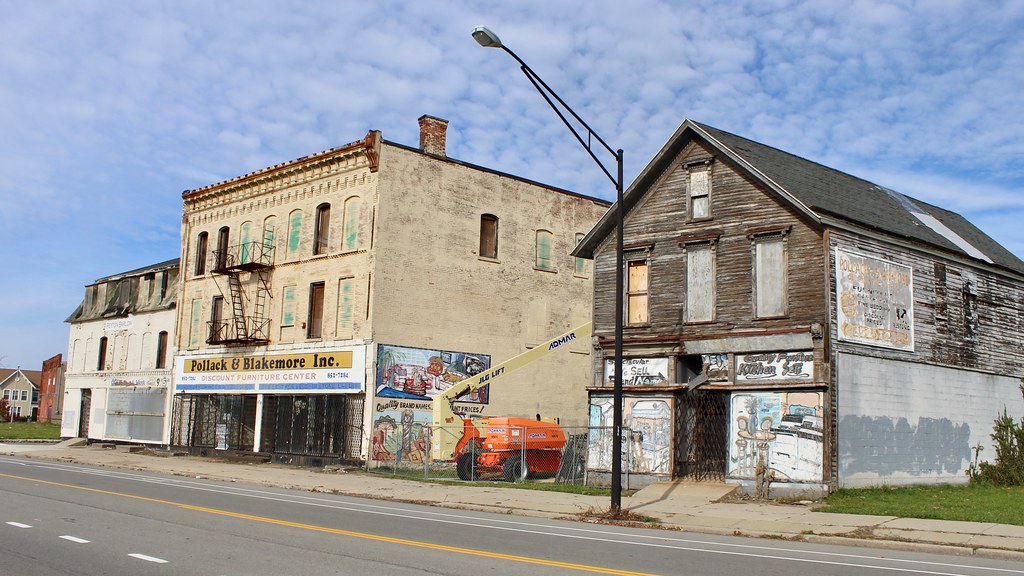
IMG_4710 by
bpawlik, on Flickr
Still waiting to see anything done.

IMG_4703 by
bpawlik, on Flickr
Newer apartments (2020) constructed on the cleaned-up site of the former Buffalo Forge factory, which closed decades earlier. Townhomes are also being added to the back side of the block-large development.

IMG_4701 by
bpawlik, on Flickr

IMG_4706 by
bpawlik, on Flickr
Functional but not updated buildings along Broadway. Likely all floors are not usable or occupied.

IMG_4721 by
bpawlik, on Flickr
Former Sattler Theater (built 1914) is undergoing a painfully slow and sporadic restoration and redevelopment process by a community based organization (that is always short of money).

Sattler Theater by
bpawlik, on Flickr
St. Anne's R.C. Church (completed 1886) and adjacent apartments have been vacant since 2012.

IMG_4722 by
bpawlik, on Flickr

IMG_4719 by
bpawlik, on Flickr

IMG_4717 by
bpawlik, on Flickr
Along this part of Broadway (closest to downtown) most neighborhood housing are either well maintained original homes (2 story from 1880s-1920s) or well maintained larger homes built after the 1990s on double lots. There are several vacant lots, and some of the infill recently has been attached townhomes or apartments. A few older homes are quirky.

IMG_4692 by
bpawlik, on Flickr

IMG_4723 by
bpawlik, on Flickr

IMG_4711 by
bpawlik, on Flickr
Continuing east toward Fillmore Avenue are the neighborhoods that had the greatest loss of residents and structures, and also where the greatest numbers of new immigrants and others have commenced restoring and replacing a neighborhood that was once one of the most densely populated in the city.

IMG_4735 by
bpawlik, on Flickr
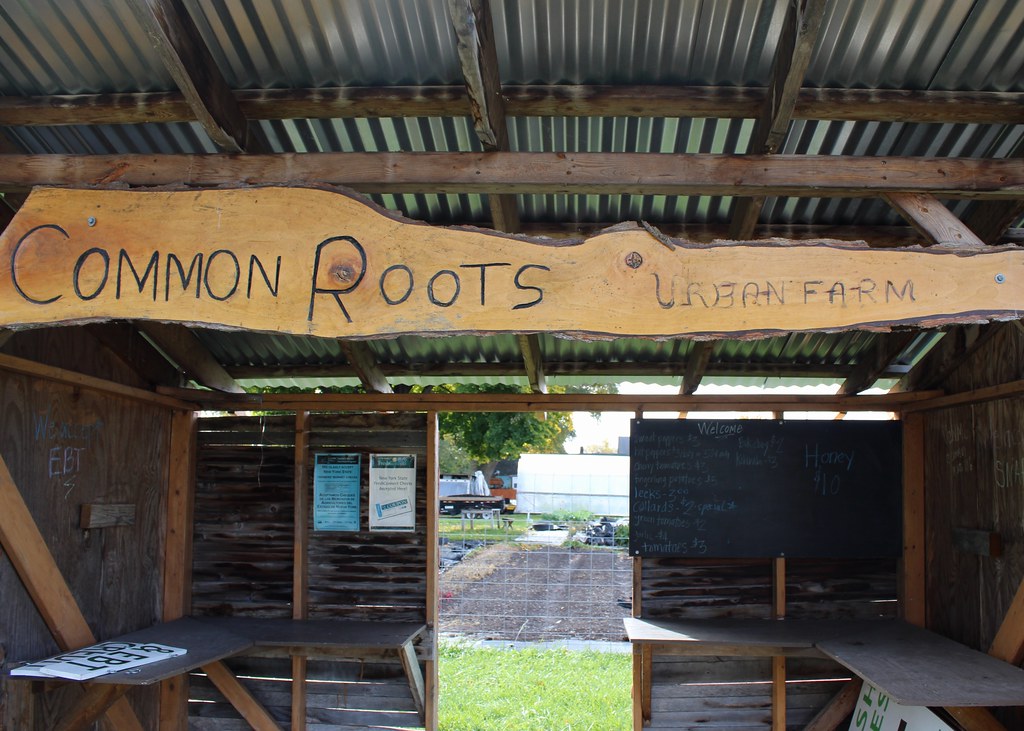
IMG_4738 by
bpawlik, on Flickr

IMG_4728 by
bpawlik, on Flickr

IMG_4732 by
bpawlik, on Flickr
St. Stanislaus Church (built between 1883-86) spires above a "telescope house" style home, which are ubiquitous throughout much of the East Side.

IMG_4739 by
bpawlik, on Flickr
St. Stan's was and is the Mother Church for Polish Catholics in Buffalo.

IMG_4741 by
bpawlik, on Flickr
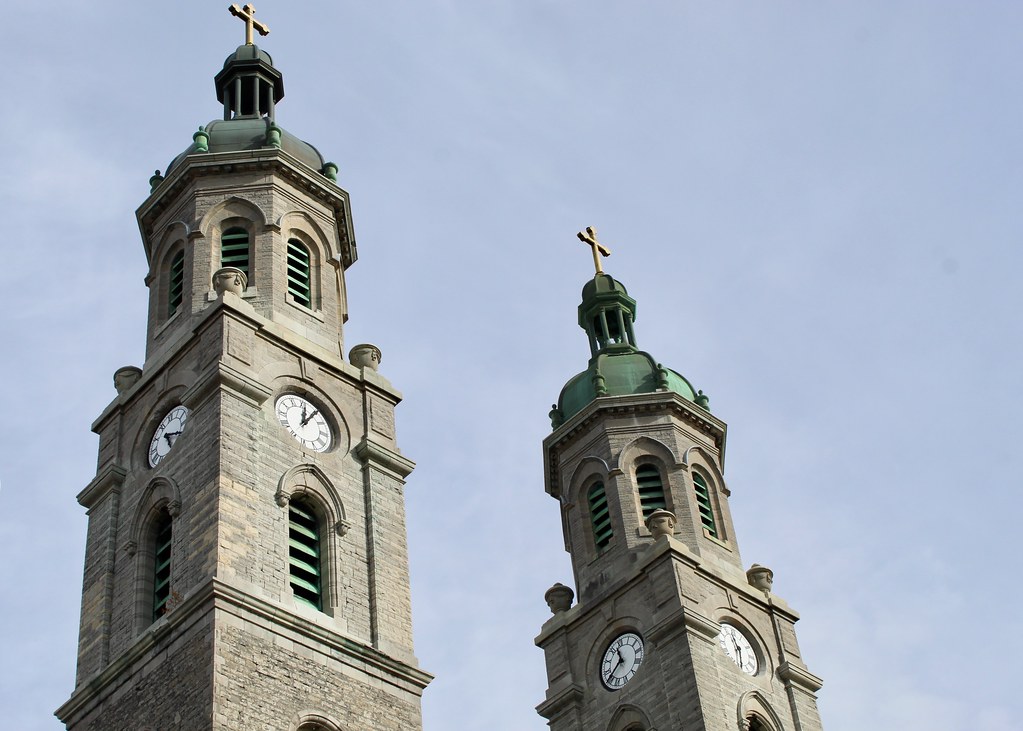
IMG_4745 by
bpawlik, on Flickr

IMG_4751 by
bpawlik, on Flickr

IMG_4756 by
bpawlik, on Flickr

IMG_4740 by
bpawlik, on Flickr

IMG_4742 by
bpawlik, on Flickr
Paderewski Street, just across Fillmore Avenue, leads up to the Central Terminal, which is currently undergoing major maintenance and stabilization, to be followed by extensive redevelopment that recently received state funding.

IMG_4760 by
bpawlik, on Flickr
Fillmore Avenue has some completed and ongoing reuse and restoration, although there are several buildings that continue to remain vacant, underused, and neglected.
Torn Space Theater addition

IMG_4755 by
bpawlik, on Flickr
Cigar Factory lofts - restoration and just completed new construction

IMG_4784 by
bpawlik, on Flickr
Former library, now theater company

IMG_4783 by
bpawlik, on Flickr
Former Schreiber Brewery building (built 1899), now being renovated and repurposed to house craft breweries

IMG_4774 by
bpawlik, on Flickr
Random Fillmore Avenue

IMG_4765 by
bpawlik, on Flickr

IMG_4767 by
bpawlik, on Flickr

IMG_4777 by
bpawlik, on Flickr

IMG_4768 by
bpawlik, on Flickr

IMG_4775 by
bpawlik, on Flickr

IMG_4781 by
bpawlik, on Flickr
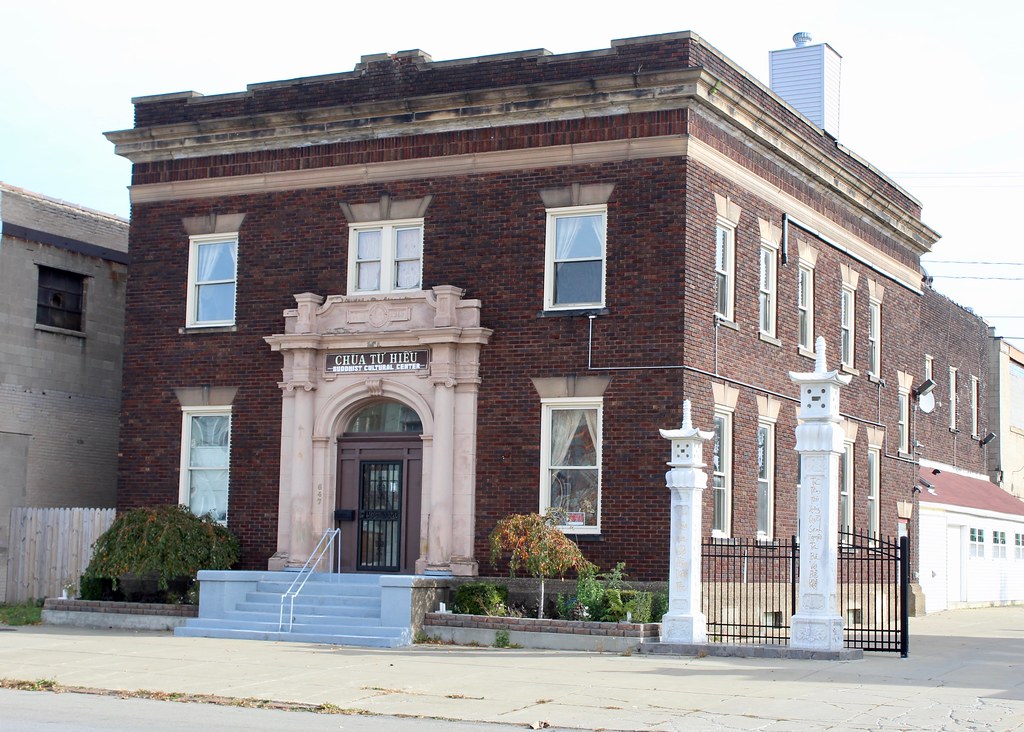
IMG_4770 by
bpawlik, on Flickr

IMG_4771 by
bpawlik, on Flickr
Not sure if this is a sculpture or served a purpose moving boulders.

IMG_4786 by
bpawlik, on Flickr
Home on Wilson Street.

IMG_4788 by
bpawlik, on Flickr
Wilson Street urban farm.

IMG_4787 by
bpawlik, on Flickr
Transfiguration Church (built 1896) undergoing attempted remediation after seeing massive decay and damage. The parish closed in 1993, and church purchased for $7000 in 1995 by current owner.
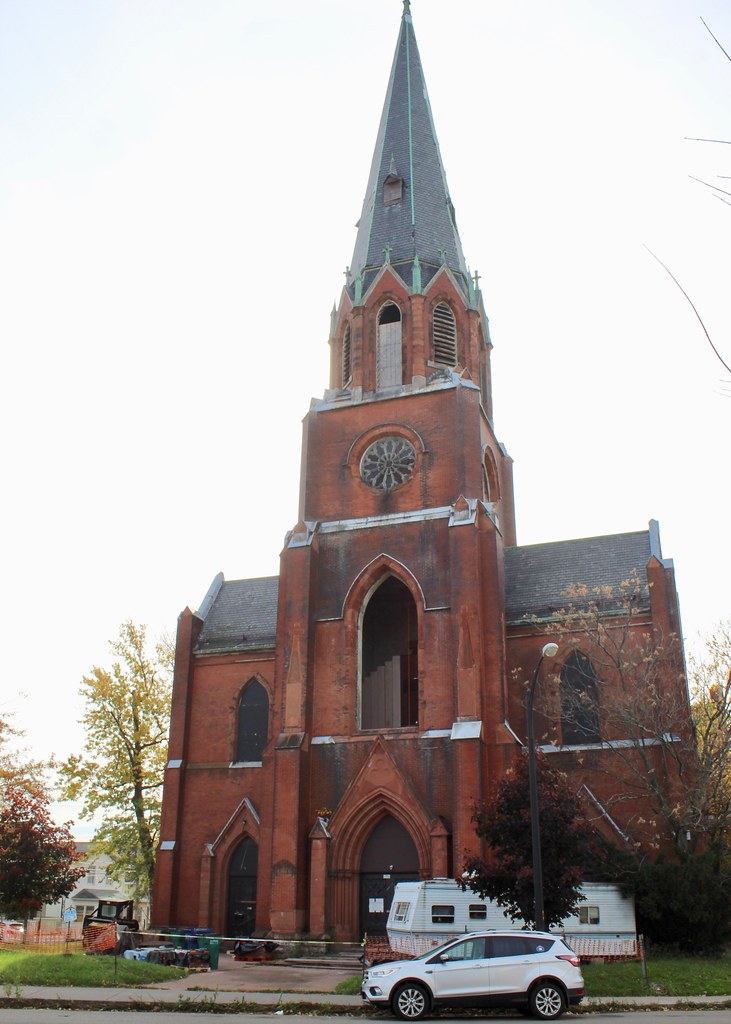
IMG_4789 by
bpawlik, on Flickr

IMG_4798 by
bpawlik, on Flickr
Islamic schools are growing as South Asian families and others move into the area, and as former Catholic schools have closed.

IMG_4793 by
bpawlik, on Flickr
Sycamore Street

IMG_4795 by
bpawlik, on Flickr
Grand churches are often wedged among small homes on tight streets. Some former Catholic and Christian churches have been repurposed to serve other faiths.

IMG_4790 by
bpawlik, on Flickr

IMG_4801 by
bpawlik, on Flickr
Masjid Zakariya, formerly the Holy Mother of the Rosary Polish National Cathedral, built in 1904, and converted to mosque beginning in 1994. The Polish National Church was a breakaway group from St. Adalbert's R.C. Church that had disagreements, sometimes leading to violence, with the Roman Catholic Church in 1895.

IMG_4803 by
bpawlik, on Flickr
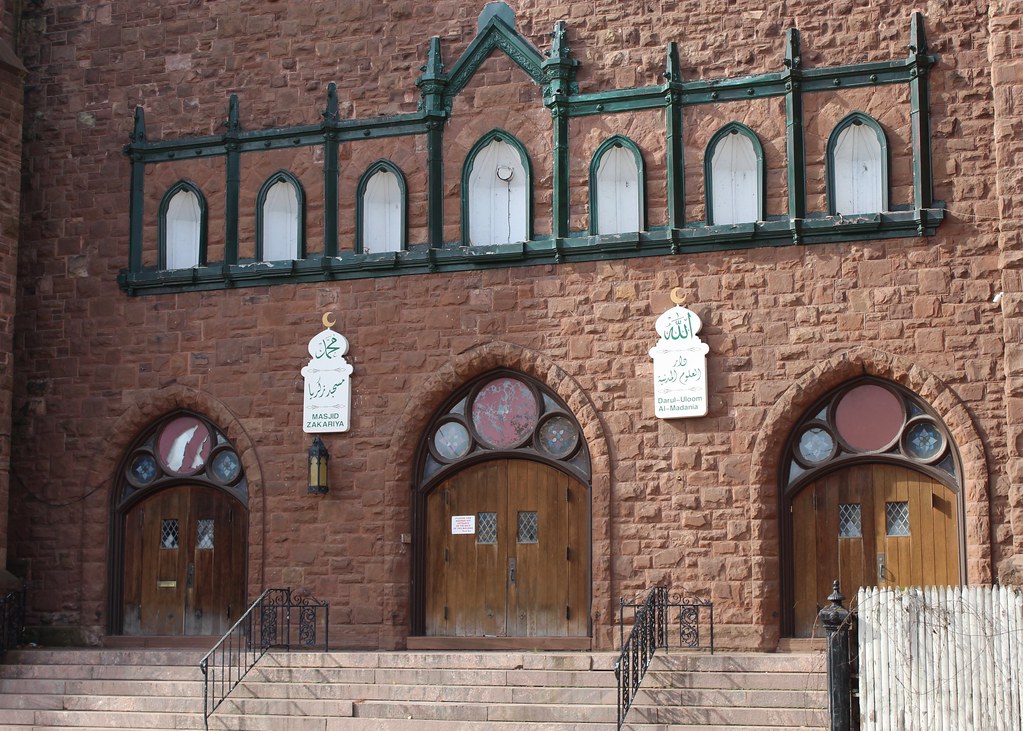
IMG_4804 by
bpawlik, on Flickr

IMG_4805 by
bpawlik, on Flickr

IMG_4806 by
bpawlik, on Flickr

IMG_4810 by
bpawlik, on Flickr
Typical workers cottages on a mainly intact well maintained street, most dating between 1860 and 1900.
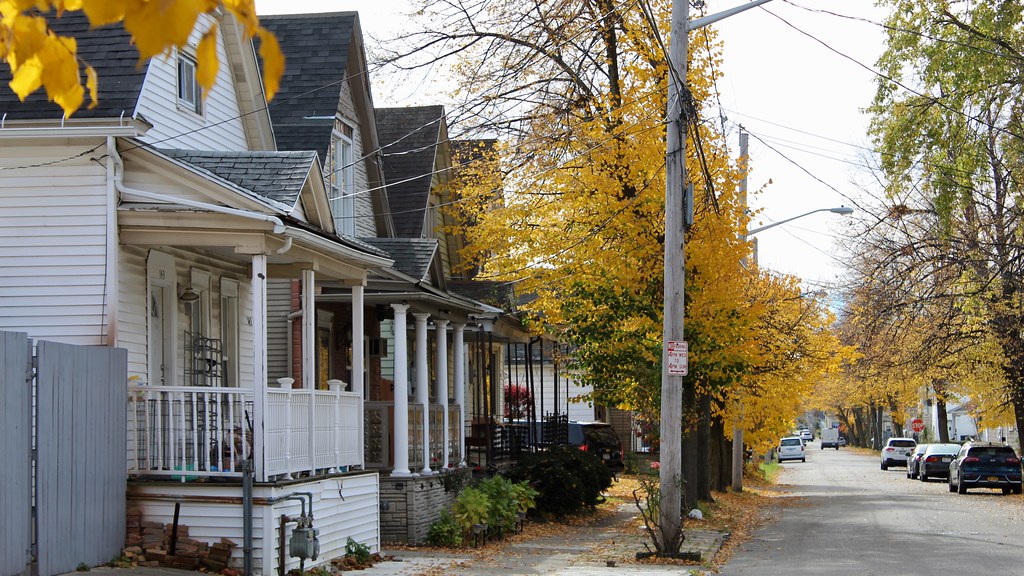
IMG_4811 by
bpawlik, on Flickr
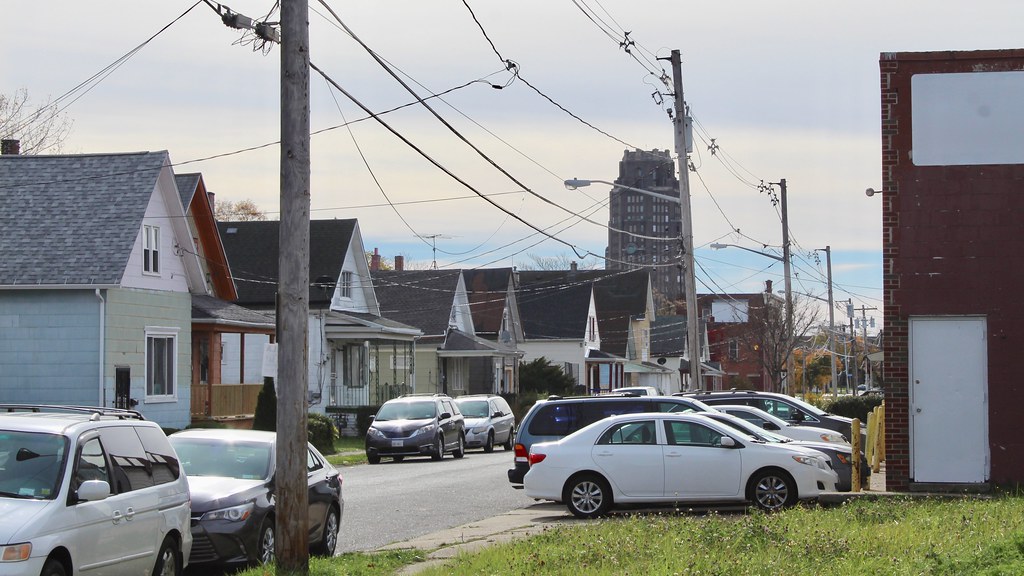
IMG_4814 by
bpawlik, on Flickr
St. Adalbert Basilica (built 1891) - among the several churches built in the neighborhood by Polish immigrants
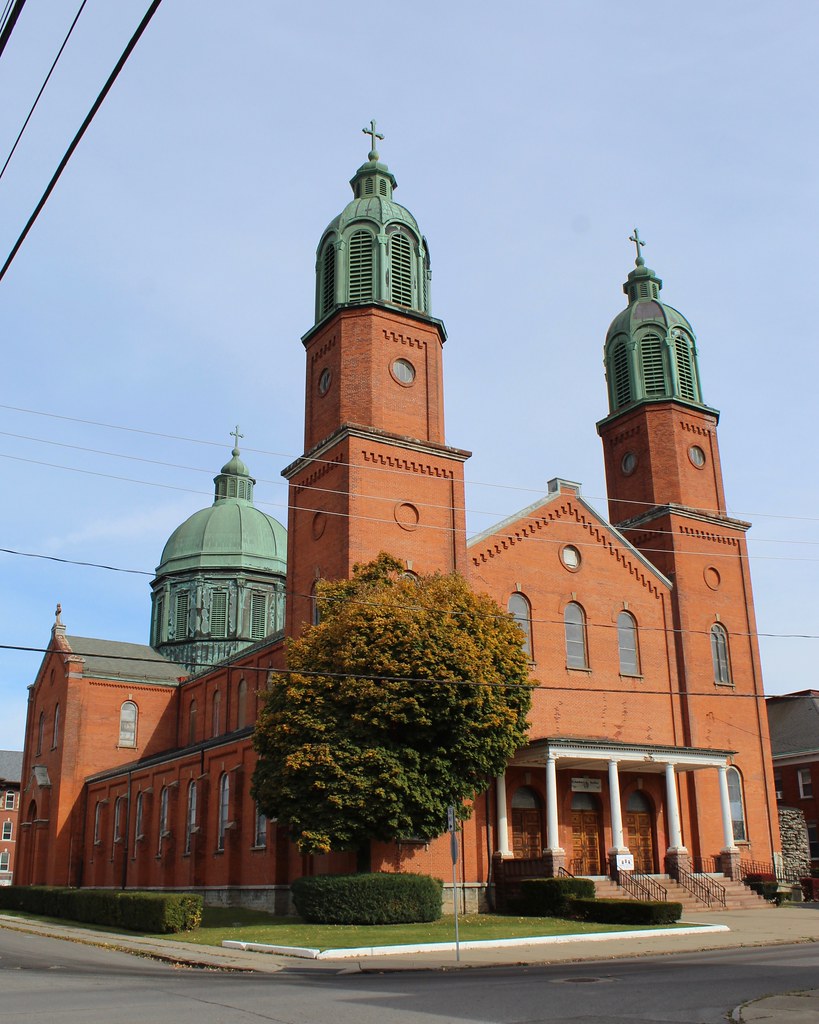
IMG_4815 by
bpawlik, on Flickr

IMG_4817 by
bpawlik, on Flickr

IMG_4818 by
bpawlik, on Flickr

IMG_4820 by
bpawlik, on Flickr
Former bakery on neighborhood side street.

IMG_4827 by
bpawlik, on Flickr
Back on Broadway, east of Fillmore Avenue, many new businesses and services have opened up in recent years as the neighborhood is seeing an influx of new people.

IMG_4829 by
bpawlik, on Flickr
Former Dom Polski hall now serves the entire community as the Matt Urban Center

IMG_4830 by
bpawlik, on Flickr
Former department stores and warehouses have been converted to health care, offices, small business collectives, and community support facilities

IMG_4832 by
bpawlik, on Flickr

IMG_4858 by
bpawlik, on Flickr

IMG_4835 by
bpawlik, on Flickr

IMG_4838 by
bpawlik, on Flickr

IMG_4860 by
bpawlik, on Flickr

IMG_4861 by
bpawlik, on Flickr

IMG_4862 by
bpawlik, on Flickr
A few more telescope houses.

IMG_4839 by
bpawlik, on Flickr

IMG_4841 by
bpawlik, on Flickr

IMG_4846 by
bpawlik, on Flickr

IMG_4848 by
bpawlik, on Flickr
Corpus Christi R.C. Church (built 1907-09) located near Broadway Market.

IMG_4840 by
bpawlik, on Flickr

IMG_4854 by
bpawlik, on Flickr

IMG_4842 by
bpawlik, on Flickr

IMG_4853 by
bpawlik, on Flickr
The Superman corner (corner of Clark and Kent)

Clark Kent by
bpawlik, on Flickr
The Broadway Market has been a neighborhood institution since 1888, though the current building was built in the 1950s. The market has struggled for several years, and has been received state funding for upgrades in an attempt to increase the number of active vendors and customers. Most of its business occurs during holiday seasons.

Babcia's by
bpawlik, on Flickr
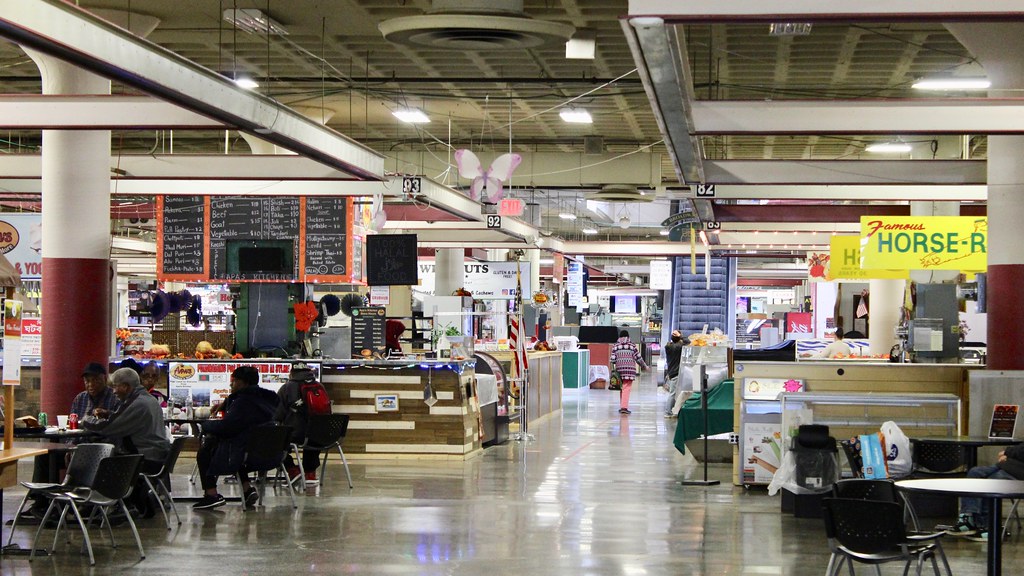
IMG_4863 by
bpawlik, on Flickr
More inside the neighborhood

Dick's East Side Inn by
bpawlik, on Flickr
Former Transfiguration Parish School (built 1914) now Darul Iman Academy for Girls.

IMG_4865 by
bpawlik, on Flickr

IMG_4868 by
bpawlik, on Flickr

IMG_4870 by
bpawlik, on Flickr

IMG_4873 by
bpawlik, on Flickr

IMG_4875 by
bpawlik, on Flickr

IMG_4877 by
bpawlik, on Flickr
Sign of a changing neighborhood

Sweet Madinah by
bpawlik, on Flickr
end



